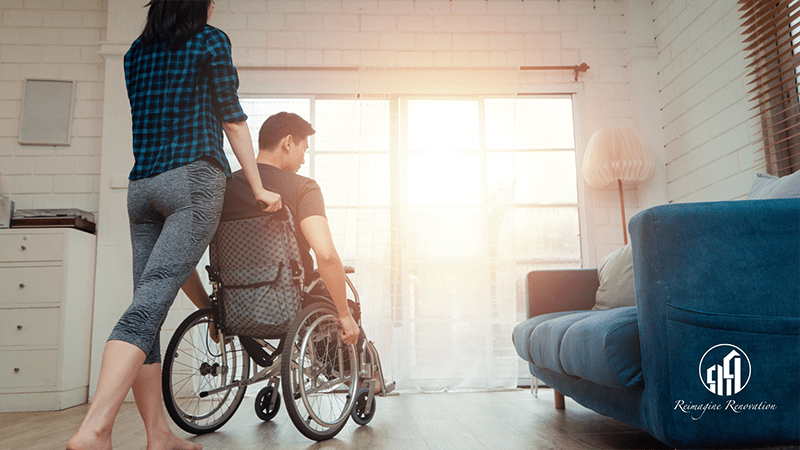Creating a home that accommodates individuals with disabilities is crucial for enhancing their quality of life. Home accessibility modifications not only promote independence but also ensure safety and comfort. In this blog post, we’ll explore various ways to modify the home environment for people with disabilities, focusing on practical changes that can be made in different areas of the home.
Understanding Home Accessibility Modifications
Home accessibility modifications are changes made to a living space that help individuals with disabilities navigate their homes more easily and safely. These modifications can range from simple adjustments, like adding grab bars, to major renovations, such as installing ramps or widening doorways.
Importance of Assessing Individual Needs
Before making any modifications, it’s essential to assess the specific needs of the individual. Each disability can present unique challenges, and understanding these needs ensures that the modifications will be effective. For instance, someone with mobility issues may require broader pathways, while a person with visual impairments will benefit from improved lighting and tactile indicators.
Key Areas for Home Accessibility Modifications
Several areas in a home require careful consideration when planning accessibility modifications. Here are some essential spaces to focus on:
1. Entrances and Exits
The entrance of a home sets the tone for accessibility. Consider the following changes:
- Ramps: Installing ramps can make it easier for wheelchair users to enter and exit their homes.
- Wide Doorways: Ensure that doorways are at least 36 inches wide to accommodate wheelchairs and walkers.
- Non-Slip Flooring: Using non-slip materials for pathways reduces the risk of slips and falls.
2. Living Room Modifications
The living room is often the heart of the home and should be accessible and inviting:
- Choose Accessible Furniture: Opt for chairs and sofas that are easy to get in and out of. Look for options with firm cushions and sturdy arms.
- Clear Pathways: Keep the living room clutter-free to allow for easy navigation with mobility aids.
- Adjustable Lighting: Install dimmer switches or remote-controlled lighting to help adjust brightness based on the individual’s needs.
3. Kitchen Adaptations
The kitchen should be functional for everyone, including those with disabilities. Here’s how to modify it effectively:
- Lowered Countertops: Consider lowering countertops to make them more accessible for individuals who use wheelchairs.
- Pull-Out Shelves: Install pull-out shelves and drawers to make it easier to access pots, pans, and utensils.
- Easy-to-Use Appliances: Choose appliances that are simple to operate, such as those with large buttons or touch controls.
4. Bathroom Safety Modifications
Bathrooms often pose the greatest safety risks. Here are essential modifications to consider:
- Grab Bars: Install grab bars near the toilet and in the shower to provide support.
- Walk-In Showers: Replace bathtubs with walk-in showers and consider adding a shower seat for safety and comfort.
- Raised Toilet Seats: Using raised toilet seats can make transfers to and from the toilet easier.
5. Bedroom Enhancements
A comfortable and accessible bedroom is key to a good night’s sleep. Here are modifications to make:
- Adjustable Beds: Consider adjustable beds that allow users to elevate their heads or legs.
- Clear Pathways: Ensure there’s enough space around the bed for easy access.
- Accessible Closets: Use lower rods or pull-down shelves in closets to make clothes and belongings more accessible.
Final Thoughts
Home accessibility modifications play a vital role in enhancing the independence and quality of life for individuals with disabilities. By focusing on specific areas like entrances, living spaces, kitchens, bathrooms, and bedrooms, caregivers and families can create an environment that supports safety and accessibility. Remember, every individual has unique needs, so a tailored approach is essential. Implementing these changes not only fosters a more inclusive environment but also empowers individuals with disabilities to lead fuller and more independent lives.
At Reimagine Renovation, we’re here to help you create a home that works for everyone. From installing ramps and grab bars to widening doorways and redesigning living spaces, our team can customize your home to meet the specific needs of your loved ones. Together, we’ll ensure your space is safe, functional, and welcoming. Contact us today to discuss how we can help make your home more accessible and inclusive!

